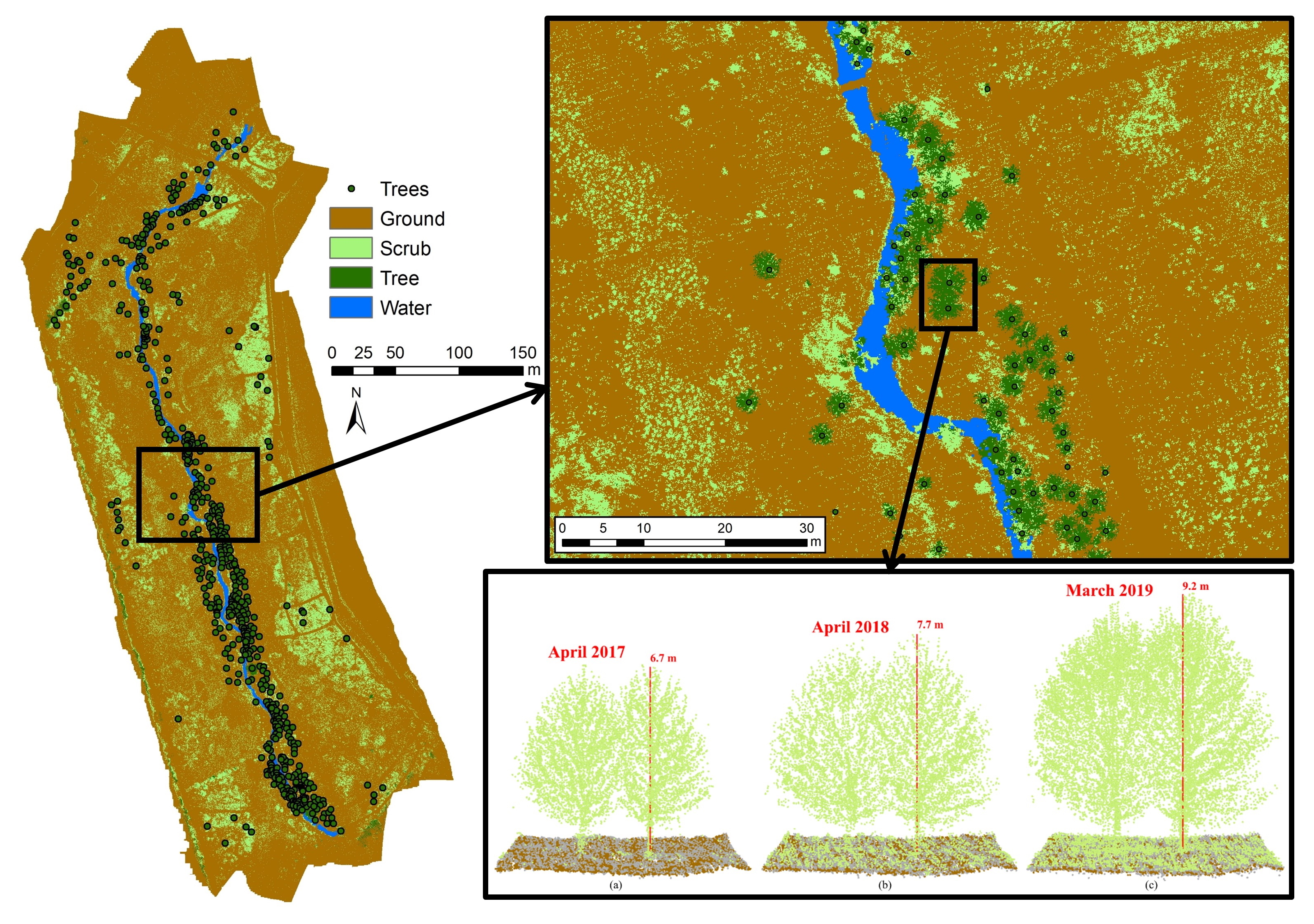Senior Lecturer Dr. Jonathan Resop (https://geog.umd.edu/facultyprofile/resop/jonathan), lecturer in the MS GIS program (https://geospatial.umd.edu/education/master-science-geospatial-information-sciences), along with researchers at Virginia Tech (https://vtstreamlab.weebly.com/), has published an article in the journal Drones entitled "Quantifying the Spatial Variability of Annual and Seasonal Changes in Riverscape Vegetation Using Drone Laser Scanning." This study is one of the first to utilize drone-based lidar to measure riverscape vegetation repeatedly over multiple years to quantify both annual and seasonal changes in physical vegetation properties such as height, roughness, and density over multiple land cover classes (e.g., scrub and tree).
The full abstract of the paper is presented below:
Riverscapes are complex ecosystems consisting of dynamic processes influenced by spatially heterogeneous physical features. A critical component of riverscapes is vegetation in the stream channel and floodplain, which influences flooding and provides habitat. Riverscape vegetation can be highly variable in size and structure, including wetland plants, grasses, shrubs, and trees. This vegetation variability is difficult to precisely measure over large extents with traditional surveying tools. Drone laser scanning (DLS), or UAV-based lidar, has shown potential for measuring topography and vegetation over large extents at a high resolution but has yet to be used to quantify both the temporal and spatial variability of riverscape vegetation. Scans were performed on a reach of Stroubles Creek in Blacksburg, VA, USA six times between 2017 and 2019. Change was calculated both annually and seasonally over the two-year period. Metrics were derived from the lidar scans to represent different aspects of riverscape vegetation: height, roughness, and density. Vegetation was classified as scrub or tree based on the height above ground and 604 trees were manually identified in the riverscape, which grew on average by 0.74 m annually. Trees had greater annual growth and scrub had greater seasonal variability. Height and roughness were better measures of annual growth and density was a better measure of seasonal variability. The results demonstrate the advantage of repeat surveys with high-resolution DLS for detecting seasonal variability in the riverscape environment, including the growth and decay of floodplain vegetation, which is critical information for various hydraulic and ecological applications.
The full paper can be accessed here:
https://www.mdpi.com/2504-446X/5/3/91
Resop, J. P., L. Lehmann, and W. C. Hession. September 2021. "Quantifying the Spatial Variability of Annual and Seasonal Changes in Riverscape Vegetation Using Drone Laser Scanning." Drones. 5(3): 91.


